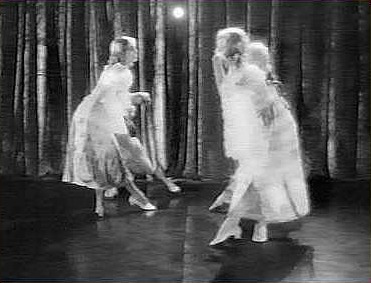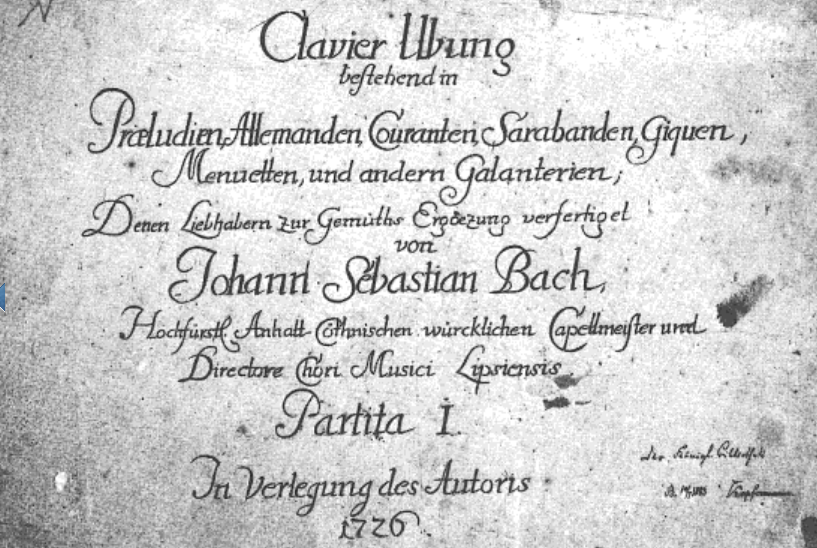|
Passepied
The passepied (, "pass-foot", from a characteristic dance step) is a French court dance. Originating as a kind of Breton branle, it was adapted to courtly use in the 16th century and is found frequently in 18th-century French opera and ballet, particularly in pastoral scenes, and latterly also in baroque instrumental suites of dances. In English the passepied has been spelled "paspy" as well as "paspie" or "paspe", phonetic approximations of the French pronunciation. History The earliest historical mention of the passepied was by Noël du Fail in 1548, who said it was common at Breton courts. François Rabelais and Thoinot Arbeau, writing later in the 16th century, identify the dance as a type of branle characteristic of Brittany. At this time it was a fast duple-time dance with three-bar phrases, therefore of the ''branle simple'' type. Like many folk-dances it was popular at the court of Louis XIV. The passepied was remodelled by Jean-Baptiste Lully as a pastoral conce ... [...More Info...] [...Related Items...] OR: [Wikipedia] [Google] [Baidu] |
Baroque Music
Baroque music ( or ) refers to the period or dominant style of Classical music, Western classical music composed from about 1600 to 1750. The Baroque style followed the Renaissance music, Renaissance period, and was followed in turn by the Classical period (music), Classical period after a short transition (the Galant music, galant style). The Baroque period is divided into three major phases: early, middle, and late. Overlapping in time, they are conventionally dated from 1580 to 1650, from 1630 to 1700, and from 1680 to 1750. Baroque music forms a major portion of the "Western art music, classical music" Western canon, canon, and continues to be widely studied, performed, and listened to. The term "baroque" comes from the Portuguese word ''barroco'', meaning "baroque pearl, misshapen pearl". Key List of Baroque composers, composers of the Baroque era include Johann Sebastian Bach, Antonio Vivaldi, George Frideric Handel, Georg Philipp Telemann, Domenico Scarlatti, Claudio Monte ... [...More Info...] [...Related Items...] OR: [Wikipedia] [Google] [Baidu] |
Court Dance
Historical dance (or early dance) is a term covering a wide variety of Western European-based dance types from the past as they are danced in the present. Today historical dances are danced as performance, for pleasure at themed balls or dance clubs, as historical reenactment, or for musicological or historical research. Dances from the early 20th century can be recreated precisely, being within living memory and after the advent of film and video recording. Earlier dance types, however, must be reconstructed from less reliable evidence such as surviving notations and instruction manuals. For performance dancing, see History of dance. Categories Medieval dance Very little evidence survives about medieval dance except what can be gleaned from paintings and works of literature from this time period. Some names of the dances which we know existed during the Middle Ages include Carole, Ductia, Estampie ( Istampitta), Saltarello, and the Trotto. The farandole is also frequentl ... [...More Info...] [...Related Items...] OR: [Wikipedia] [Google] [Baidu] |
Suite (music)
A suite, in Western classical music, is an ordered set of instrumental or orchestral/concert band pieces. It originated in the late 14th century as a pairing of dance tunes; and grew in scope so that by the early 17th century it comprised up to five dances, sometimes with a Prelude (music), prelude. The separate Movement (music), movements were often thematically and tonally linked. The term can also be used to refer to similar forms in other musical traditions, such as the Ottoman Classical Music, Turkish fasıl and the Arab music, Arab nuubaat. In the Baroque music, Baroque era, the suite was an important musical form, also known as ''Suite de danses'', ''Ordre'' (the term favored by François Couperin), ''Partita'', or ''Ouverture'' (after the theatrical "overture" which often included a series of dances) as with the orchestral suites of Christoph Graupner, Georg Philipp Telemann, Telemann and Johann Sebastian Bach, J.S. Bach. During the 18th century, the suite fell out of fav ... [...More Info...] [...Related Items...] OR: [Wikipedia] [Google] [Baidu] |
Partitas For Keyboard (Bach)
The Partitas, BWV 825–830, are a set of six keyboard suites written by Johann Sebastian Bach, published individually beginning in 1726, then together as '' Clavier-Übung I'' in 1731, the first of his works to be published under his own direction. They were, however, among the last of his keyboard suites to be composed, the others being the six English Suites, BWV 806-811 and the six French Suites, BWV 812-817, as well as the Overture in the French style, BWV 831. History The six partitas for keyboard form the last set of suites that Bach composed, and are the most technically demanding of the three. They were composed between 1725 and 1730 or 1731. As with the French and English Suites, the autograph manuscript of the Partitas is no longer extant. In keeping with a nineteenth-century naming tradition that labelled Bach's first set of Suites ''English'' and the second ''French,'' the Partitas are sometimes referred to as the ''German'' Suites. This title, however, is ... [...More Info...] [...Related Items...] OR: [Wikipedia] [Google] [Baidu] |
French Overture
The French overture is a musical form widely used in the Baroque period. Its basic formal division is into two parts, which are usually enclosed by double bars and repeat signs. They are complementary in style (slow in dotted rhythms and fast in fugal style), and the first ends with a half-cadence (i.e., on a dominant harmony) that requires an answering structure with a tonic ending. The second section often but not always ends with a brief recollection of the first, sometimes even repeating some of its melodic content. The form is first encountered in Jean-Baptiste Lully's ballet overtures from the 1650s. Later examples can be found as the opening movement of each of Johann Sebastian Bach's orchestral suites, Partita in D major, BWV 828, C minor Cello Suite, BWV 1011, and as an opening to many operas and oratorios by George Frideric Handel (including ''Messiah In Abrahamic religions, a messiah or messias (; , ; , ; ) is a saviour or liberator of a group of people. The ... [...More Info...] [...Related Items...] OR: [Wikipedia] [Google] [Baidu] |
Gigue
The gigue ( , ) or giga () is a lively baroque dance originating from the English jig. It was imported into France in the mid-17th centuryBellingham, Jane"gigue."''The Oxford Companion to Music''. Ed. Alison Latham. Oxford Music Online. 6 July 2008 and usually appears at the end of a suite. The gigue was probably never a court dance, but it was danced by nobility on social occasions and several court composers wrote gigues.Louis Horst, ''Pre-Classic Dance Forms'', (Princeton, NJ: Princeton Book Company, 1987), 54–60. A gigue is usually in or in one of its compound metre derivatives, such as , , or , although there are some gigues written in other metres, as for example the gigue from Johann Sebastian Bach's first ''French Suite'' (BWV 812), which is written in and has a distinctive strutting "dotted" rhythm. Gigues often have a contrapuntal texture as well as often having accents on the third beats in the bar, making the gigue a lively folk dance. In early French th ... [...More Info...] [...Related Items...] OR: [Wikipedia] [Google] [Baidu] |
Johann Sebastian Bach
Johann Sebastian Bach (German: Help:IPA/Standard German, [ˈjoːhan zeˈbasti̯an baχ]) ( – 28 July 1750) was a German composer and musician of the late Baroque music, Baroque period. He is known for his prolific output across a variety of instruments and forms, including the orchestral ''Brandenburg Concertos''; solo instrumental works such as the Cello Suites (Bach), cello suites and Sonatas and Partitas for Solo Violin (Bach), sonatas and partitas for solo violin; keyboard works such as the ''Goldberg Variations'' and ''The Well-Tempered Clavier''; organ works such as the ' and the Toccata and Fugue in D minor, BWV 565, Toccata and Fugue in D minor; and choral works such as the ''St Matthew Passion'' and the Mass in B minor. Since the 19th-century Reception of Johann Sebastian Bach's music, Bach Revival, he has been widely regarded as one of the greatest composers in the history of Western music. The Bach family had already produced several composers when Joh ... [...More Info...] [...Related Items...] OR: [Wikipedia] [Google] [Baidu] |
Da Capo
Da capo ( , , ; often abbreviated as D.C.) is an Italian musical term that means "from the beginning" (literally, "from the head"). The term is a directive to repeat the previous part of music, often used to save space, and thus is an easier way of saying to repeat the music from the beginning. In small pieces, this might be the same thing as a repeat. But in larger works, D.C. might occur after one or more repeats of small sections, indicating a return to the very beginning. The resulting structure of the piece is generally in ternary form. Sometimes, the composer describes the part to be repeated, for example: ''Menuet da capo''. In opera, where an aria In music, an aria (, ; : , ; ''arias'' in common usage; diminutive form: arietta, ; : ariette; in English simply air (music), air) is a self-contained piece for one voice, with or without instrument (music), instrumental or orchestral accompan ... of this structure is called a '' da capo aria'', the repeated sect ... [...More Info...] [...Related Items...] OR: [Wikipedia] [Google] [Baidu] |
Johann Mattheson
Johann Mattheson (28 September 1681 – 17 April 1764) was a German composer, critic, lexicographer and music theorist. His writings on the late Baroque and early Classical period were highly influential, specifically, "his biographical and theoretical works were widely disseminated and served as the source for all subsequent lexicographers and historians". Early life and career Johann Mattheson was born on 28 September 1681 in Hamburg. The son of a prosperous tax collector, Mattheson received a broad liberal education and, aside from general musical training, took lessons in keyboard instruments, violin, composition and singing. By age nine he was singing and playing organ in church and was a member of the chorus of the Hamburg opera. He made his solo debut with the Hamburg opera in 1696 in female roles and, after his voice changed, sang tenor at the opera, conducted rehearsals and composed operas himself. He was cantor at St. Mary's Cathedral, Hamburg from 1718 until increa ... [...More Info...] [...Related Items...] OR: [Wikipedia] [Google] [Baidu] |






